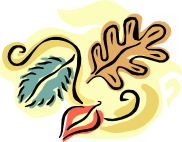Bark up the right landscape tree

By Angie DeFeo, Master Gardener Volunteer, and
Charles Brasher, Extension Agent, Jackson County
There comes a day when Mother-Nature awakens your senses to the season of growth and renewal. Today may be the day to plant that tree you have been thinking There There comes a day when Mother-Nature awakens your senses to the season of growth and renewal. Today may be the day to plant that tree you have been thinking or dreaming about. You relish the thought of having that spreading oak or chestnut tree out back to support a hammock or a childís swing. You remember practically living in trees in your youth, climbing and building tree houses. Maybe a productive fruit tree would add to your nutritional needs. In all, you have a tree that you can admire, use to enhance the value of your property and to improve the beauty of your yard.
Whatever the reason, you are motivated to go out and buy those trees. Itís pretty simple -- dig a hole, plop the tree into it, backfill the hole with dirt and water. But wait, there are doís and doníts to everything, even something as simple as planting a tree. Do not just go out and buy a tree. Research and study and learn all you can about your choice of tree. Consult various resources, including the local Cooperative Extension Office, local plant nursery personnel, the library and the Internet. Some considerations include:
High or Low maintenance Ė just how much time are you willing to take with trees? Is the tree adapted to the local climate -- heat or cold, wet or dry seasons?Is this tree prone to infestations such as diseases, insects, or critters?
Many visits and calls are made to the local Extension Offices from homeowners with concerns about pests of trees and other landscape tree problems. Itís best to get info before you purchase the trees if you want to avoid problems.
Do not just dig a hole and plant the tree you just proudly purchased. Plan and make placement decisions that will enhance the life and aesthetic value of the tree. Evaluate the landscape to decide where it will harmonize with the existing flora. Some decisions include:
Is the tree going to be decorative or functional only, serving as shade or a wind barrier?
Will the tree be grown singly, or does it fare better in a cluster, such as for pollination (for fruits and nuts), or for appearance, different colors of blooms, stems, or leaves?
Safety issues to be considered include distance from buildings, power lines, underground utilities, and driveways.
If you are in a fire-prone area, are the trees far enough away from the occupied dwelling, barns, property exits, or a high value storage area(s)? The Florida Division of Forestry can assist in this. You should have a sketch, a written plan, as to where you want the trees to go along with the other features of the property and landscape. The local Extension Office can assist you in this.
Do not think for a minute that the tree will turn into a natural beauty without some tender love and care (TLC). Devote time and energy to a living organism to ensure its health and survival. Food and water in the form of fertilizer and rainfall or added moisture, along with sunshine, are the basic needs. Prune away excess branches for stronger growth and to allow the sun to shine through. Protect as needed from damage by insects, diseases, four- or two- legged critters, wheeled objects, lawn mowers and string trimmers.
Mark a calendar or maintain a log book to indicate when intervention is needed, or when it was done. Care of trees includes raking the fallen leaves, piling them up, and mulching them to let the grass grow underneath the perimeter of the trees. How are you at picking up pine cones? Sweet gums, chestnuts, and magnolias have seed cones to pick up after the season -- Dou mind doing that? For all your efforts and TLC, you will have healthy, beautiful, and well-tended trees. Even Mother Nature would be proud.
For further information, request the following landscape tree publications from the local Extension Office, or by the IFAS website, : Circular 858, "Selecting and Planting Trees and Shrubs". Information is also available for trees and shrubs that are adapted to wet, dry, and shady sites. The University of Georgia Extension Service has a publication entitled "Fast Growing Shade Trees" which is available online, If you cannot access that, or need additional info, please call the Jackson County Extension Office at 850-482-9620, visit the office online at or in person at 2741 Pennsylvania Avenue, #3, Marianna, FL 32448 or contact your countyís Extension Office.
Page created and maintained by West Florida Electric Cooperative, Inc. © 2001.
designed by embryo design